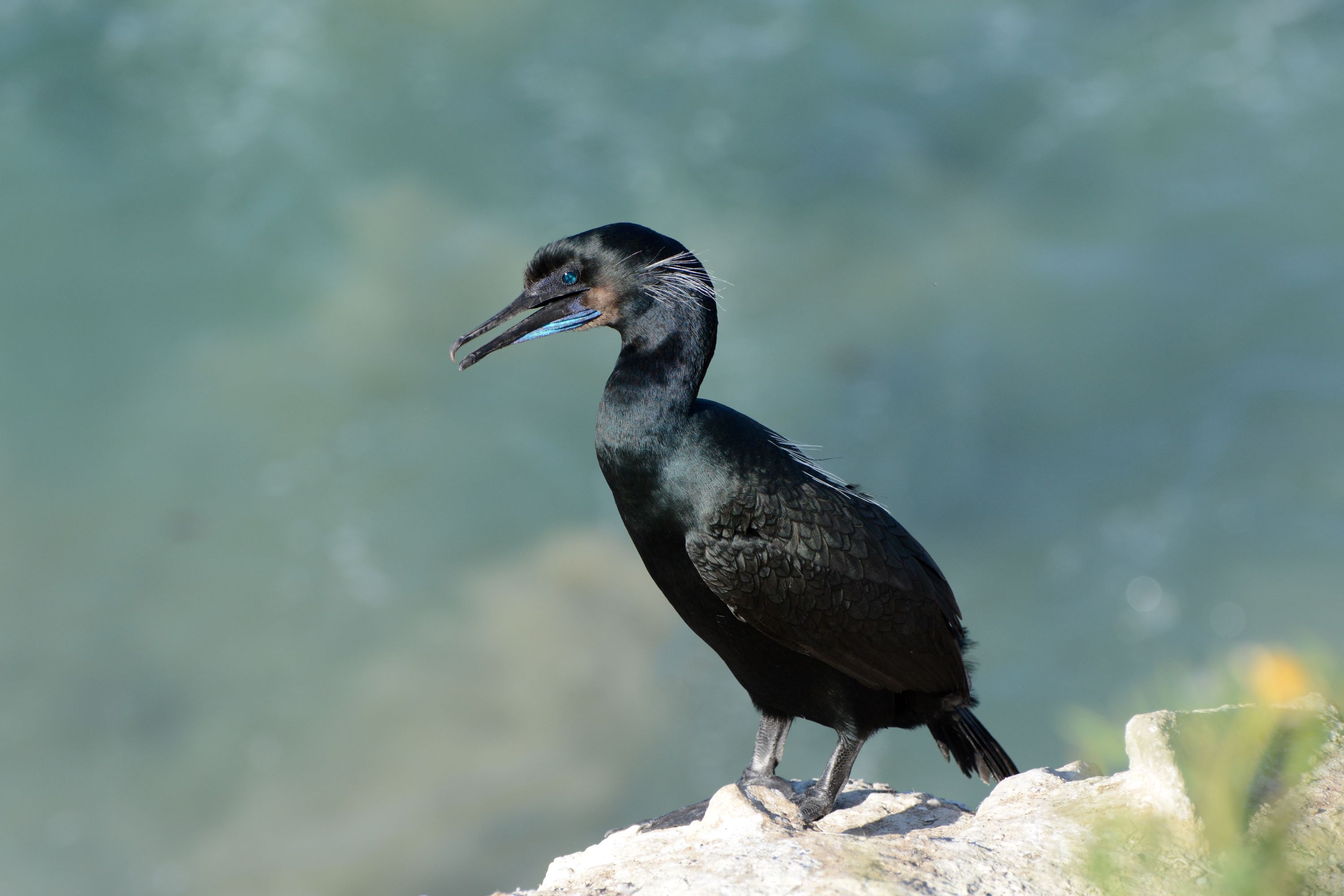
Brandt's Cormorant: The Coastal Diver
Introduction to Brandt's Cormorant
The Brandt's Cormorant, scientifically named Urile penicillatus, is a distinctive member of the cormorant family, Phalacrocoracidae. Known for its striking appearance and specialized diving ability, this seabird is a common sight along the Pacific Coast of North America, from Alaska to the lower reaches of California.
Physical Characteristics
Brandt's Cormorant is a medium-sized bird, typically measuring about 85 cm in length with a wingspan of approximately 120 cm. It is characterized by its dark, almost black plumage, which can exhibit a blue or green sheen in sunlight. During the breeding season, adults develop bright blue throat patches and white plumes on their neck and back, adding to their distinctive look.
Habitat and Distribution
This species primarily inhabits marine coastal environments, particularly favoring rocky shores, cliffs, and offshore islands. Brandt's Cormorants are found along the Pacific Coast of North America, with their range extending from the Aleutian Islands in Alaska to the coast of Baja California in Mexico.
Breeding and Nesting Habits
Brandt's Cormorants are colonial nesters, often forming large breeding colonies on coastal cliffs and islands. They build their nests from seaweed, grass, and twigs, typically choosing sites that are elevated and offer protection from potential predators.
Egg Laying and Incubation
The female Brandt's Cormorant typically lays 3 to 5 eggs per breeding season. Both parents share the responsibility of incubating the eggs, which lasts for about 28 to 35 days. The nests are situated close to one another, creating dense and active colonies during the breeding period.
Chick Rearing and Parental Care
Once hatched, the chicks are altricial and require extensive care from both parents. They are fed regurgitated fish and grow rapidly. The parental care continues until the chicks are capable of fending for themselves, which occurs when they are about 8 weeks old.
Diet and Feeding Behavior
Brandt's Cormorants primarily feed on small schooling fish such as anchovies, sardines, and herring. They are excellent divers and use their webbed feet to propel themselves underwater in pursuit of prey. Their diet reflects the abundance and variety of fish in their coastal habitats.
Adaptations for Aquatic Life
Adapted for life in coastal marine environments, Brandt's Cormorants have waterproof plumage and a unique subcutaneous air layer that aids in buoyancy control. This adaptation allows them to dive and swim efficiently underwater, making them skilled hunters.
Conservation Status
Currently, Brandt's Cormorant is not listed as an endangered species. However, they face environmental challenges such as pollution, oil spills, and changes in fish populations due to overfishing. Conservation efforts are aimed at protecting their natural habitats and ensuring the sustainability of fish stocks.
Conclusion: Celebrating the Brandt's Cormorant
In conclusion, the Brandt's Cormorant, Urile penicillatus, is an exemplary species of the coastal marine ecosystems along the Pacific Coast. Their distinctive breeding behaviors, remarkable foraging skills, and the role they play in the maritime food chain underscore the importance of conserving their natural habitats. As an integral part of the oceanic environment, Brandt's Cormorants continue to fascinate and engage bird enthusiasts and conservationists alike.